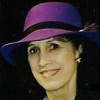Home » Jazz Articles » Live Review » 35th Paradise Valley Jazz Party
35th Paradise Valley Jazz Party
Musical Instrument Museum
Phoenix, AZ
April 21-22, 2012
A kaleidoscopic history of jazz was delivered during three sessions of the 35th annual Paradise Valley Jazz Party, from post-bop, ballads and blues to a swinging recreation of the Quintet of the Hot Club of France.
Peak moments that elicited the most audience response were Lew Tabackin's sizzling tenor sax solos, trumpeter Claudio Roditi's contagious passion, the zealous energy of drummer Butch Miles, pianist Tamir Hendelman's classy proficiency, Don Vappie's agile guitar explorations, drummer Lewis Nash's innovative drive, Shelly Berg's joyful keyboard energy, and trumpeter Marvin Stamm's treble-range excursions.
The gypsy-jazz sound of the Hot Club was replicated once again at the party (previously in 2008), this time with a combo led by bassist Brian Torff, who toured with violinist Stephane Grappelli in the 1970s. New York whiz-kid violinist Aaron Weinstein created brightly swinging melody lines, underscored by New Orleans guitarist Vappie dazzling in the Django Reinhardt role, with Arizona guitarist Stan Sorenson alternating rhythm backing and his own inventive solos. Among the legendary upbeat charts were "Lady Be Good" and "Minor Swing," along with the pensive "Nuages." A second set on Sunday featured the combo playing non-Hot Club charts, but in the same style.
Tabackin constantly delivered imaginative solos while dancing to and from the mic, swinging his sax high. Tenor sax balladeer Houston Person crooned smoothly with occasional bursts of rough heat. West Coast saxophonist Don Menza's swaggering tenor sparked several sets, but one of those featured too many consecutive ballads.
Roditi inserted Brazilian burn in his post-bop chops, while Stamm delivered a crisp trumpet sound and rich flugelhorn warmth. Bill Watrous contributed bop via his mellow trombone tone and still-amazing technique.
Hendelman continues to be a favorite for his elegant piano style and gifted delivery.
Berg always brings his A-game to the stage, plunging into the keyboard with ardent vigor and obvious pleasure. Pianist-vocalist Dave Frishberg was featured in a solo set of his originals, including "Slappin' the Cakes" and "My Attorney Bernie" but then, in a strange shift from his usual amusing verbiage, played two songs that related to suicide.
Nash, who was born and raised in Phoenix before relocating in 1981 to New York City and subsequently touring the world, continually delivered percussive innovation and melodic moves. In contrast, Miles brought his always-joyous attitude to the kit, approaching each chart as if playing it for the first time. Roger Humphries' rhythm stints were infused with inventive elements that punctuated the horn work.
New additions to the party roster were three Midwesterners: Michigan bassist Paul Keller, whose robust sound was impressive; and three Pittsburgh musicians, bassist Dwayne Dolphin and the Ashby brothers, Jay on trombone and Marty on guitar.
An Arizona State University student big band delivered a polished powerhouse sound beyond their experience and years on selected charts by Count Basie, Duke Ellington-Billy Strayhorn and Thad Jones.The band was led by the college's jazz studies director, Michael Kocour, who played piano in a later set that featured Tucson Jazz Institute student Max Goldschmidt performing equally well on trumpet and alto sax.
At the past 34 parties, seating in a hotel ballroom was at cabaret tables with wait-service for food and beverages. Repeat patrons registered two complaints: no socializing between sets or with musicians in the Green Room, which was backstage and inaccessible; and the museum policy of permitting only bottled water in the theater, despite a bar in the lobby. Producer Don Z. Miller said he will return the 36th edition to a hotel setting.
< Previous
Everything Must Change
Comments
Tags
Live Reviews
Patricia Myers
United States
Arizona
lew tabackin
Claudio Roditi
Butch Miles
Tamir Hendelman
Don Vappie
Lewis Nash
Shelly Berg
Marvin Stamm
Brian Torff
Stephane Grappelli
Aaron Weinstein
Django Reinhardt
Houston Person
Don Menza
Bill Watrous
Dave Frishberg
Roger Humphries
Paul Keller
Dwayne Dolphin
Count Basie
duke ellington
Billy Strayhorn
Thad Jones
Michael Kocour
For the Love of Jazz
 All About Jazz has been a pillar of jazz since 1995, championing it as an art form and, more importantly, supporting the musicians who create it. Our enduring commitment has made "AAJ" one of the most culturally important websites of its kind, read by hundreds of thousands of fans, musicians and industry figures every month.
All About Jazz has been a pillar of jazz since 1995, championing it as an art form and, more importantly, supporting the musicians who create it. Our enduring commitment has made "AAJ" one of the most culturally important websites of its kind, read by hundreds of thousands of fans, musicians and industry figures every month.






















